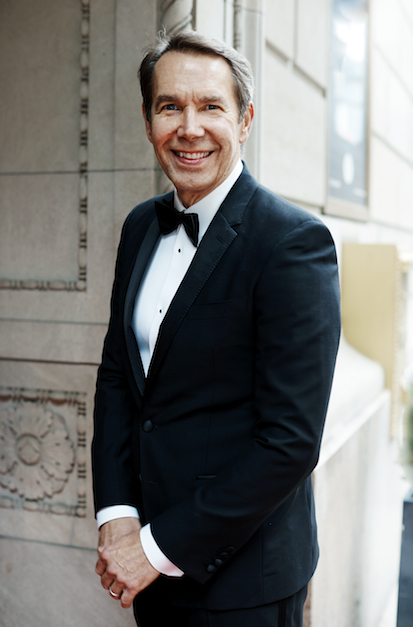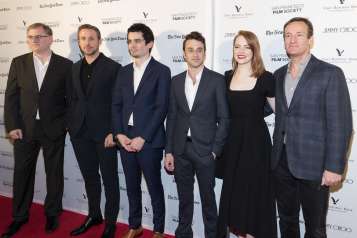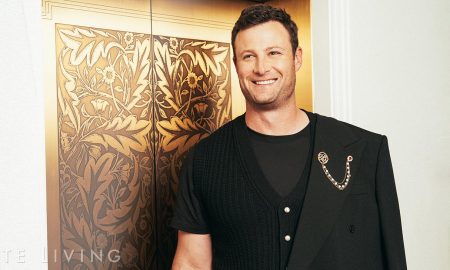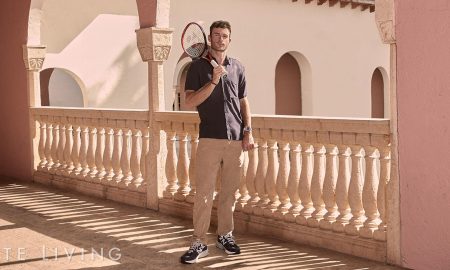
Most of us know Jeff Koons for his colorful balloon sculptures—and the high prices they command. Indeed, Pluto & Proserpina and Seated Ballerina, two of Koons’ works that will be revealed on December 2nd at the Oceana Bal Harbour by billionaire developer and art collector Eduardo Costantini, will be the most expensive installations ever in a residential complex.
While Koons’ art indeed commands the highest prices of any living artist, that wasn’t what he set out to do. He wanted to be part of the avant-garde, connect with people and live to his maximum potential. It might be safe to say he’s reached it. Koons is a devoted father to a large brood of children who seems happiest with his family. He’s also a philanthropist, giving both time and money to the International Centre for Missing & Exploited Children (ICMEC), starting the research arm of the organization, The Koons Family Institute on International Law & Policy.
HL: You have achieved so much, rising to the top in the art world. Did you ever think this was going to happen?
JK: I still have to pinch myself at some of the situations I find myself in. I was never thinking [about financial gain.] I’ve always just wanted to experience life and be part of the avant-garde. I wanted to be part of a group and have a dialogue with people like Dalí, Picasso, Warhol, Lichtenstein… That was the reward for me.
I always felt that if I were contributing something, society would take care of me. If you made something of value that people felt enriched by it in some manner, then you’d be taken care of, so you could continue those pursuits. I never make anything to be popular or by figuring out what people would like, because it wouldn’t have that much of a life in the real art world. I’m trying to make things that I feel a physical reaction to along with intellectual stimulation and development. I am always trying to exercise the “freedom of gesture.” That is the freedom we have in life for the realization of our potential.
HL: In 1980, very early on in your art career, you supported yourself selling mutual funds on Wall Street. Was that hard to reconcile with being an artist?
JK: The only reason I became involved in the financial arena was to make enough income to produce the works that I wanted to make. I was always an artist, but I also grew up with a family that were merchants and loved people. I was brought up to be very self-reliant. Even when I was younger, I would go door to door selling gift-wrapping paper. I would sell chocolates and interact with a lot of people. I remember, when I would knock on somebody’s door, you never knew what the people inside were going to be like. You didn’t know what odor would come out of the home, if there was plastic on the furniture. [It forced] a removal of judgment and participating in acceptance and the understanding that, at the end of the day, the only thing we should really care about is each other. Subjective art is really just learning to trust in yourself. Objective art, the highest level of art, is the acceptance of others. I really think this whole dialogue with art started when I was a child going door to door, learning to accept others.
HL: One of your most iconic images, The Balloon Dog, has a very surprising story behind it.
JK: I was what they call a “left-behind parent.” My son Ludwig was taken during a parental abduction, from New York to Italy [by ex-wife Ilona Staller]. By the time that I was there, it was very, very difficult for me to get my son returned. I worked with the National Center for Missing & Exploited Children, but by the time I got there, Italy kind of took over the jurisdiction of the case even though the divorce [and] custody proceedings started here in New York. It was a horrible, traumatic experience, worrying about my son and not being able to see him and interact with him. I felt like a dog chasing its tail, constantly going around in circles. What helped me get through that time was my artwork, which helped me hang on to my beliefs in humanity and society.
The dog was my way to connect to the moment and let him know I was thinking about him. I wanted him to look back and see these works and realize this kind of youthfulness and optimism. I always thought of the balloon dog as a little like a Trojan Horse, that there was something else inside, that could be a protective force [for him].
HL: You’ve since had six younger children with your wife, Justine. Are you surrounding yourself with children to make up for the loss of Ludwig, as well as Shannon, a child you gave up for adoption and have since reconnected with?
JK: I’ve always enjoyed children, and I think it was just a very natural kind of outcome. We both enjoy the idea of a larger family and of siblings being able to have each other to interact with. I mean, we find what brings us joy in life are activities that we do together; being in this world is a celebration of life and of children.
HL: Tell us about your friends and über-philanthropists, the Broads, and the ICMEC cause.
JK: I presented Eli and Edythe Broad with an award at the 2016 Gala for Child Protection. I’ve learned so much from them and think of them as role models because of their responsibility to this community and everything they do help other people. They have the Broad Institute, which furthers biomedical research, and the Broad Prize for Urban Education. [Their goal is] trying to help people, to better the worst school districts and give these people opportunities to pull themselves up.
HL: In addition to your art and family, I understand you are very interested in longevity so you can work as long as possible.
JK: Well, I have very young children and I’d like to be around and active with them. I’ve always been interested in training and taking care of myself. I started back around 1989, lifting weights. Arnold Schwarzenegger even put together a little training program for me. But what I really love is that it’s a metaphor for reaching one’s full potential. The mind and body are capable of so much more, and if you start to inform it you will start to do more. You are expanding the parameters of what can be done.
HL: What is on the horizon for you?
JK: My goal is to embrace the freedom that we have as human beings and to experience life and open myself up to make the works that I really want to make. I just want to be the best artist, the best parent, the best husband and the best person that I can and give back to my community. That’s what I find exciting and rewarding.
HL: What is your biggest luxury?
JK: I would have to say my family. I always enjoy that pleasure—to be with family. Especially for your people, if you can show them they can really have a broad life, I find that really exciting and probably the greatest luxury.
























